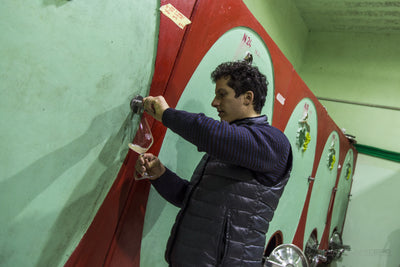Sweet wine is perhaps the marmite of the wine world, to put it incredibly awkwardly. Many turn up their noses at all sweet wine as a cloying, overbearingly sickly concoction, while others religiously shun dry table wines in favour of their sugary peers. Why is this?
As humans it’s fair to say that we naturally enjoy sweet things. However, ‘having a sweet tooth’ often stops short of wines with high residual sugar for many. Are they just too tasty, disappear too quickly and blamed as the culprit for the consumer’s headache the next morning? It’s surprising how many wine types are outright condemned as being the sole cause of a particularly nasty hangover of long ago, when a greater consumption rate on the part of the victim is often at fault.
Why are sweet wines sweet and how are they sweet? The idea of the artificiality or additive nature of sugar may be what detracts many, apart from any natural preference towards drier styles. The key thing to remember is that nothing has been added to the wines to make them taste sweet, and all the processes that lead to it are natural occurrences in the vineyard, harnessed rather than manipulated in the winery. I recently had a bottle of 1985 port that proclaimed on the label ‘port is a natural wine’, and its true! Let me explain …
Sweet wine production is all about catching the grapes at a different stage in their life. In port and vin doux naturel production for example, the addition of fortifying spirit to stop fermentation (so that less sugar is converted to alcohol) is not obtrusive or interventionist winemaking, its merely preserving the natural character of the grapes at a different stage in their development. The same goes for so called ‘cane cut’ wines such as Keermont’s Fleurfontein, but before the grapes have been harvested. In this method, the bunches are cut off from their supply of water and nutrients by clamping the stem, so the grapes dehydrate, resulting in incredibly concentrated small quantities of sweet juice. Then there’s the syrupy goodness of ‘sticky’ wines such as Sauternes and Tokaj that truly have no match. These wilder, funkier wines are a result of botrytis or ‘noble rot’, where the grapes are left on the vine deliberately to shrivel. Like cane cut, the grapes dehydrate, the sugars concentrate, and a glorious natural nectar is born! The last main method is of course Eiswein – this time the shriveling is due to icily cold temperatures, most famously on the banks of Austria’s Lake Neusiedl, from which the higher-sugar lower-freezing point juice can be extracted.
So you see, it’s all natural!
There is a middle ground between the ‘extremes’ of dry and sweet - off-dry wines. Famous examples include Riesling Kabinett from the Mosel Valley, Vouvray Demi-Sec from the Loire, and the aromatic Muscat. Muscat’s drier incarnations in particular, with the variety’s naturally sweet and floral aromas, can provide some of the full-frontal sugar-dusted appeal of proper sweet wines, but with little to no residual sugar. And then there’s the whole range of sugar levels in champagne, ranging from the popular bone-dry zero-dosage to the rare and insanely hedonistic champagne doux, which is sometimes in excess of 50 grams per litre of residual sugar. For comparison, port usually sits around the 100 g/l mark, while Sauternes and cane cut wines can often exceed 200 g/l!
But high sugar content needn’t mean a wine is weighted down with no structure or acid – it’s about balance and timing. Think of an ocean liner: it may be massive, but it still floats because it isn’t a solid mass - it's a cohesive whole supported by a lattice structure of girders and beams. In the same way, a sweet wine can have over 200 g/l of residual sugar, but as long as it is supported by ample acidity and phenolic structure, it will still be a vibrant, fresh and self-sufficiently holistic experience. As with all wine, it's all about that key word - balance.

